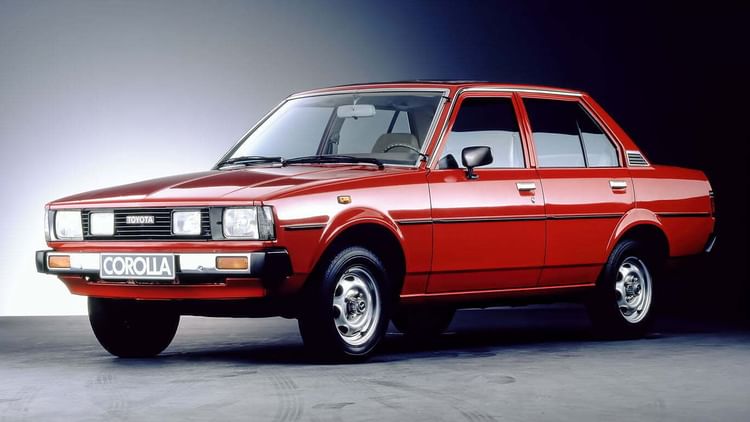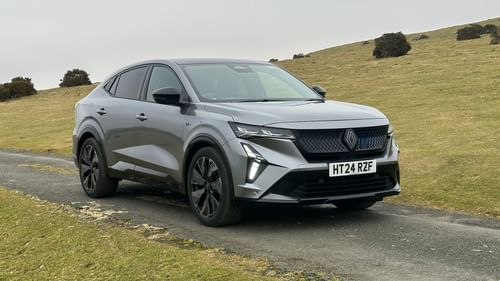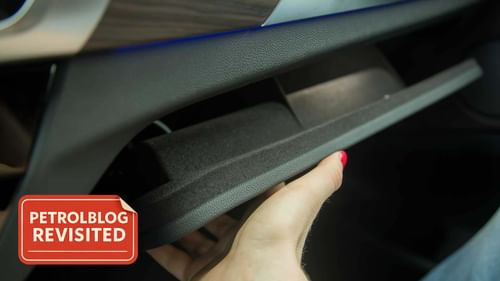The return of the Toyota Corolla is proof that the world isn't broken

For a truly global product, there was always something rather British about the Toyota Corolla. It was the bread and butter vehicle of the nation. The milk with one sugar. The ‘turned out nice again, hasn’t it?’ The short back and sides.
It never pretended to be anything other than a car for everybody – a ‘people’s car’, if you like. Sure, there were sporting and off-road versions, but the Corolla was at its most comfortable as a common or garden and unassuming hatchback, estate or saloon.
Since its launch in 1966, the Toyota Corolla enjoyed messing with the establishment, locking horns, first with the Ford Escort, then the likes of the Chevette, Allegro, Sunny, Astra and Focus.
There were sceptics. Anyone on the street who dared to pick the 'funny little Oriental car' was accused of a lack of patriotism. “Don’t worry, love, Johnny Foreigner won’t last – these tin-pot pretenders will be a flash in the pan,” said Terry, peering across the road from behind his Brentford Nylons.
But while Tom, Dick, Terry and June continued to buy British, the enlightened few enjoyed a trouble-free journey to work, without the smell of WD40 on their hands and the sound of failing starter motors ringing in their ears.
To cut a long story short
The fact is, while British cars were getting more expensive, Japanese motors were rolling off the ships with a smaller price tag and a conveyor belt of toys long enough to give Larry Grayson a coronary. The British car industry was just too dim-witted to notice.
Taking one moment in time as an example: in 1980, you could buy a Toyota Corolla 1.3 for £3,349 – about £15 less than a Datsun Sunny. Crucially, an Escort 1300 GL cost £3,885, a Chevette GL £3,853, an Avenger GL £4,096, and a Marina 1300 HL an almost laughable £4,232.
Yes, the European cars were better built, but in terms of price and specification, Japan was streets ahead. Intermittent wipers and three-speed heater blowers were the automotive equivalents of having an extra slice of pineapple on your Berni Inn gammon steak.
Perhaps more than any other Japanese car, the Toyota Corolla soon became the brand generic for a family motor. While other vehicles changed names more often than Cheryl from Girls Aloud, the Corolla stuck to its guns.

Compare and contrast the Corolla to its arch-rival from Nissan – first the Datsun Sunny, then the Nissan Sunny, then the Almera. Then, after taking some extended leave to go backpacking around the world, it returned as the Nissan Pulsar.
The Sunny-Almera-Pulsar would have seen many Corollas on its travels. Some 45 million have been sold since 1966, making it as ubiquitous as Coca-Cola and Lay’s crisps. In fact, some experts say that you’re never more than 6ft away from a Toyota Corolla. Or were they talking about rats?
You are gold... GOLD
But then, in 2006, as Apple was preparing to launch the iPhone, Toyota did the unthinkable – it announced that it would be killing the Corolla. OK, it survived the termination in other parts of the world, but in Europe, one of the most famous names was all but eradicated.
A Corolla Shatchback remained on sale in certain eurozones, but the hatchback and estate versions were replaced by a new European-built Toyota Auris. Five-door versions built at Toyota’s Burnaston factory in Derbyshire, with Turkey handling the three-door models.
Toyota knew that the Corolla name had become a byword for mediocrity. As the go-to car for non-car people, the Corolla had next-to-no aspirational qualities, making it poorly placed to capitalise on the industry’s move upmarket.
According to Toyota, the Auris name was easy to pronounce, linked “naturally to Yaris and Avensis” and “had its roots in ‘aurum’, the Latin word for gold. It also avoided any translation issues – no Mitsubishi Pajero, Mazda Laputa or Daihatsu Scat nightmares for Toyota.
“Creating a new name for the car was a priority,” said Andrea Formica, vice president of sales and marketing at Toyota Motor Europe.
“To achieve the level of volume growth we are seeking in Europe, we needed to change people’s perceptions of our C-segment hatchback. We believe we have succeeded, people spontaneously reacted to the name with words such as ‘futuristic’, ‘high-class’ and ‘attractive’.”

Only when you leave
A decade on, the decision has been reversed, and the Auris name will be consigned to the history books. It has sold well – some 1.5 million have found a home – but you're unlikely to recall when you last saw one.
The Auris is like magnolia paint – it’s there, you just don’t notice it. It hasn’t become part of the furniture quite like the Toyota Corolla. And while it might not be a fashionable thing to say, PETROLBLOG is pleased the name is back.
Its return means that the world isn’t quite as broken as it might appear. It’s a victory for common sense. The Corolla name is as welcoming as arriving home after a long walk to the smell of a roast dinner. As familiar as the sound of stirring a mug of tea. As trusted as your best mate from school.
Dependability and reliability are almost a given, but the new Toyota Corolla also manages to look good. The unacceptable face of the E110 Corolla is a dim and distant memory. Heck, the Corolla estate looks jaw-to-the-floor good, even if Toyota has given it a fancy pants name.
Touring Sports just doesn't fit the Corolla vibe. This car is about instant coffee served in a styrofoam cup, not a three-quid latte or a bloody mochaccino. Let's not get overexcited, Toyota.

Raise a glass to toast the return of a familiar name. This Toyota is back to knock a certain Ford out of Focus. To leave a popular Volkswagen feeling a little below par. To sign the death warrant for the Vauxhall Astra. To dance on the grave of the Nissan Pulsar.
If nothing else, the return of the Toyota Corolla to Britain sees the country at one with the world. And that’s something we haven’t been able to say for a very long time.





